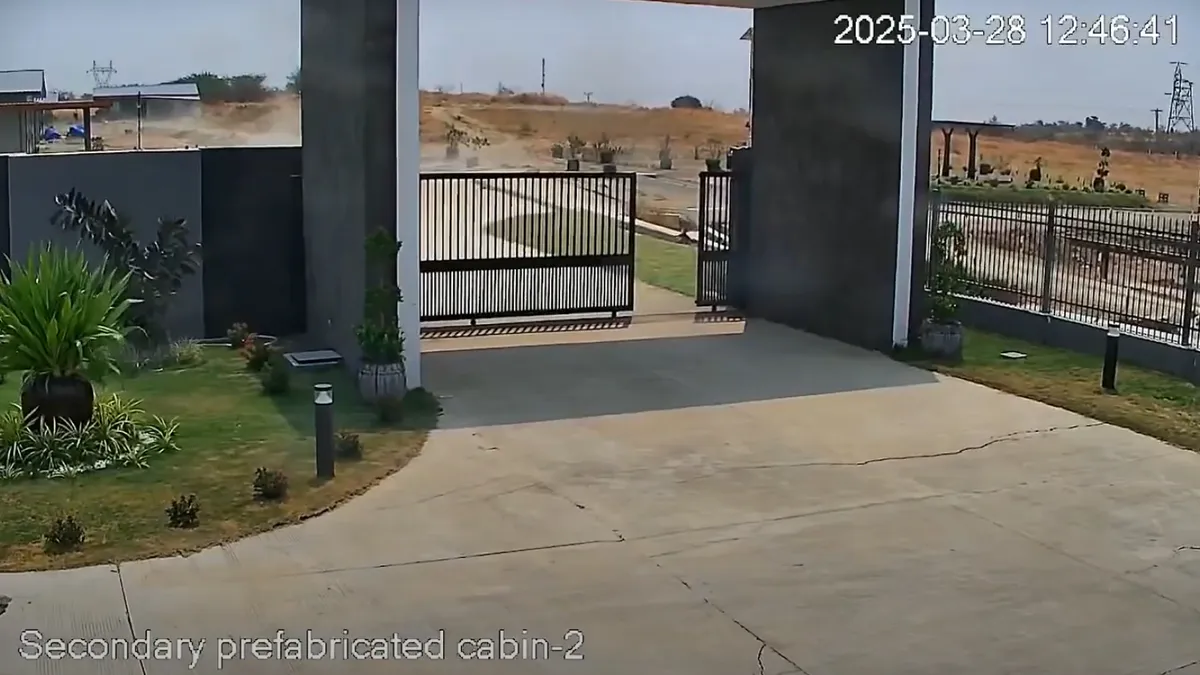
A groundbreaking video showcasing the ground cracking during a significant earthquake has revealed astonishing details previously unseen. This remarkable footage not only captures a unique ground motion but also illustrates the crack's curved movement as it progresses. Geophysicist Jesse Kearse, a postdoctoral researcher at Kyoto University in Japan, stated that while such movement had been inferred from geological records and slickenlines—scrape marks found on fault sides—it had never before been observed in real-time.
The video, recorded by a security camera near Thazi, Myanmar, documents the ground rupturing during a magnitude 7.7 earthquake that struck the region on March 28. Viewers can see the ground shake dramatically, followed by a crack that opens up, demonstrating the ground ruptures that often occur during significant seismic events. Kearse expressed his astonishment while watching the footage shortly after it was uploaded to YouTube, recalling how he felt chills as he observed the rapid movements of the crack.
Upon closer examination during his fifth or sixth viewing, Kearse noticed the crack's distinct curvature. Alongside his colleague, geophysicist Yoshihiro Kaneko, he conducted a detailed analysis of the video. Their findings revealed that the crack initially curves sharply before accelerating to a peak velocity of approximately 10.5 feet per second (or 3.2 meters per second), ultimately slipping a total of 8.2 feet (2.5 meters) in just 1.3 seconds. After reaching its maximum velocity, the crack straightens out and slows down.
The research suggests that the curvature of the crack occurs due to differing stress levels on the fault, with surface stresses being lower than those deeper within the Earth. This variation creates an uneven pattern in the fault movement, providing crucial insights into the dynamics of the rupture. Kearse emphasized the significance of these findings in a YouTube video where he annotated the slip, stating that the curvature holds essential information about the mechanics of the rupture.
The differing stresses at the surface can cause the fault to deviate from its expected path before ultimately correcting itself, as Kearse explained in his statement. Understanding the dynamics of these curvatures is vital, as they partially depend on the direction in which the rupture travels. By studying these curves, scientists can glean valuable clues regarding the behavior of past earthquakes and enhance their ability to predict future ground ruptures.
This unprecedented video not only adds to our knowledge of earthquake dynamics but also underscores the importance of continued research in the field of geophysics. As scientists like Kearse and Kaneko analyze this footage, we move one step closer to comprehending the complexities of our planet's seismic activity.